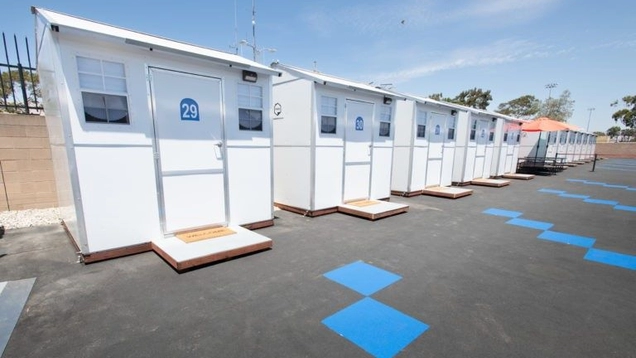Posted on 05/20/2024

ONE BIG THING: 6 STEPS TO OPENING NEW INTERIM HOUSING IN LA
The City has fewer than 400 interim shelter beds for over 3,000 people living on the streets in our district, so as an office, one of our top priorities is opening new interim housing sites.
This week, we wanted to break down the 6 steps we need to take to make that happen, and how our efforts are going so far. If you have a site in District 13 that you think may be suitable for interim housing, safe parking, etc., email cd13homelessness@lacity.org.
Step 1: Identify the Parcel
Our office has investigated over 40 potential interim housing sites in the past year in a half. Some are viable, some are not, but all are investigated.
These sites typically come to our attention in three ways:
- Property owners contact the office looking to lease or sell a building or undeveloped parcel.
- A privately-owned site is identified by our office, and we reach out to the owners.
- Our team identifies underused, or convertible, city lots or existing buildings.
Step 2: Ask Key Questions
Once the parcel is identified, we ask:
- Is it public or privately owned?
- Is it a dirt lot, paved lot, or an existing building in various states of use?
- Has the property already been permitted for an alternative use?
Step 3: Order a “Property Profile”
Should the site not be slated for future development, our office contacts the City Administrative Office (CAO) to order a “Property Profile,” which includes:
- Distance from transit, schools, churches, and grocery stores.
- Zoning codes (industrial, residential, mixed use).
- Flooding and earthquake risks.
Of the more than 40 potential sites we’ve investigated, about 12 properties made it to this stage.
Step 4: Order a “Site Assessment Report”
In this stage, the Bureau of Engineering inspects the site for ADA compliance, safety hazards, code compliance, fire hazards, and other concerns.
Of the more than 40 potential sites we’ve investigated, about 6 properties made it to this stage.
Step 5: Identify Funding and a Service Provider
All interim housing in Los Angeles is contracted to non-profit service providers, who run the site. Funding can come from city funding, funding set aside in legal settlements, or state/federal grants.
Step 6: Get Council Approval
Once the interim housing site has jumped all these hurdles, the site is submitted through approval via the Housing and Homelessness Committee, and then ultimately through the full City Council, and the site is given an opening date.
Of the more than 40 potential sites we’ve investigated, 1 property has made it to this stage, and an additional 3 properties look promising.
Why This Matters
Our team will stop at nothing to make this happen because we know that the lack of shelter beds is the #1 obstacle to the near-term solutions for the homelessness crisis that our community needs.
The process can be long and tedious, but that's why we have three staff members on our Homelessness Team working on these issues every single day, along with three more staff members on our Tenant Organizing Team so we can also keep working families in their homes and off the streets.
Two More Quick Hits!
1. 18 Affordable Housing Units on 1 Single-Family Lot
On Thursday, our office joined the groundbreaking for Loma Verde, which will be an 18-unit affordable housing complex on the site of a previously vacant single-family house.
Loma Verde will feature small studio apartments, and it will also have wrap-around services like job placement and mental health care for the formerly unhoused people who will live there.
This type of development is exactly what we need more of to solve our homelessness and housing affordability crisis, and we’re excited to join Holos Communities for the opening of this complex late next year.
2. Recognizing “El Mac”
This week we were honored to invite Miles “El Mac” MacGregor to City Hall, and recognize him for his amazing work as a public artist and muralist. An LA native, El Mac is an icon in the street art world, and has painted his incredible murals, usually honoring marginalized or overlooked people, all over the world - including several right here in CD13!
El Mac’s art uplifts regular people, and it shows us the immense power and ability of art to connect, to create change, and to inspire growth.